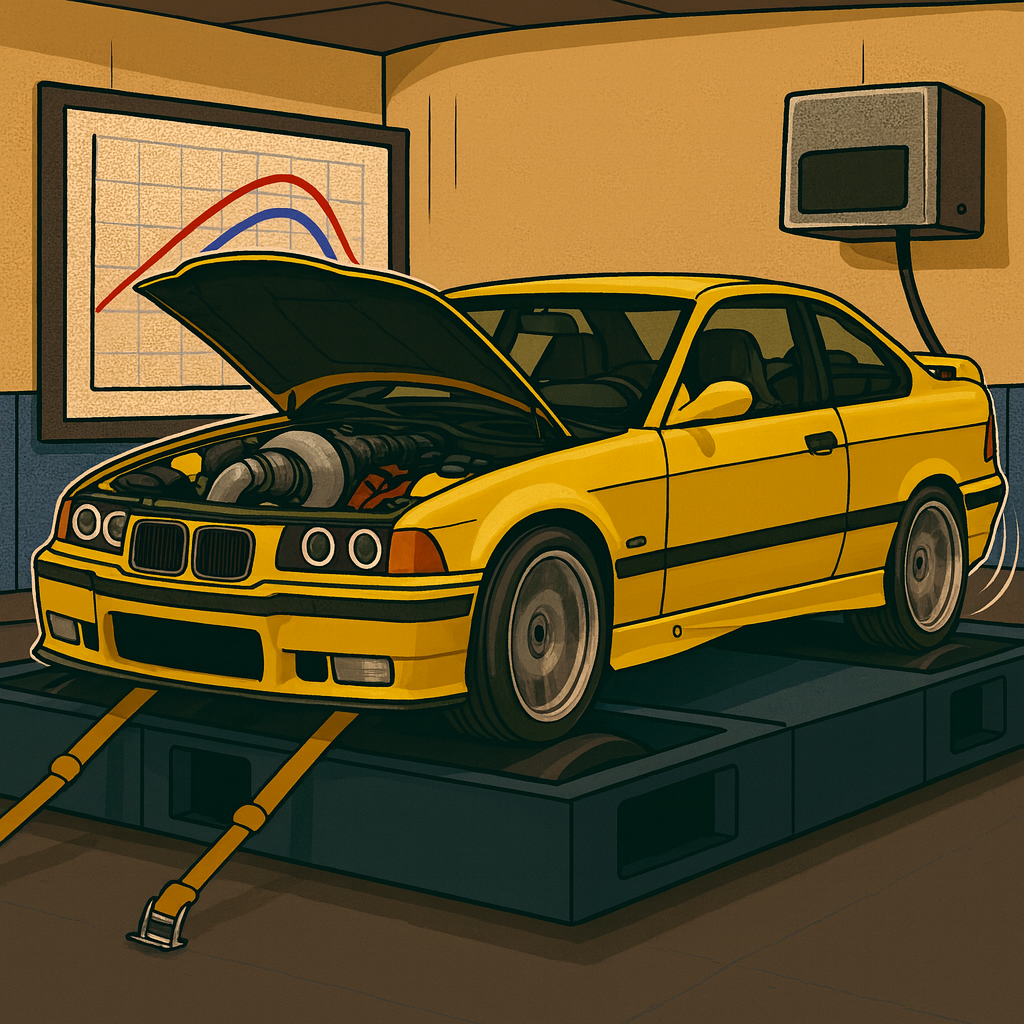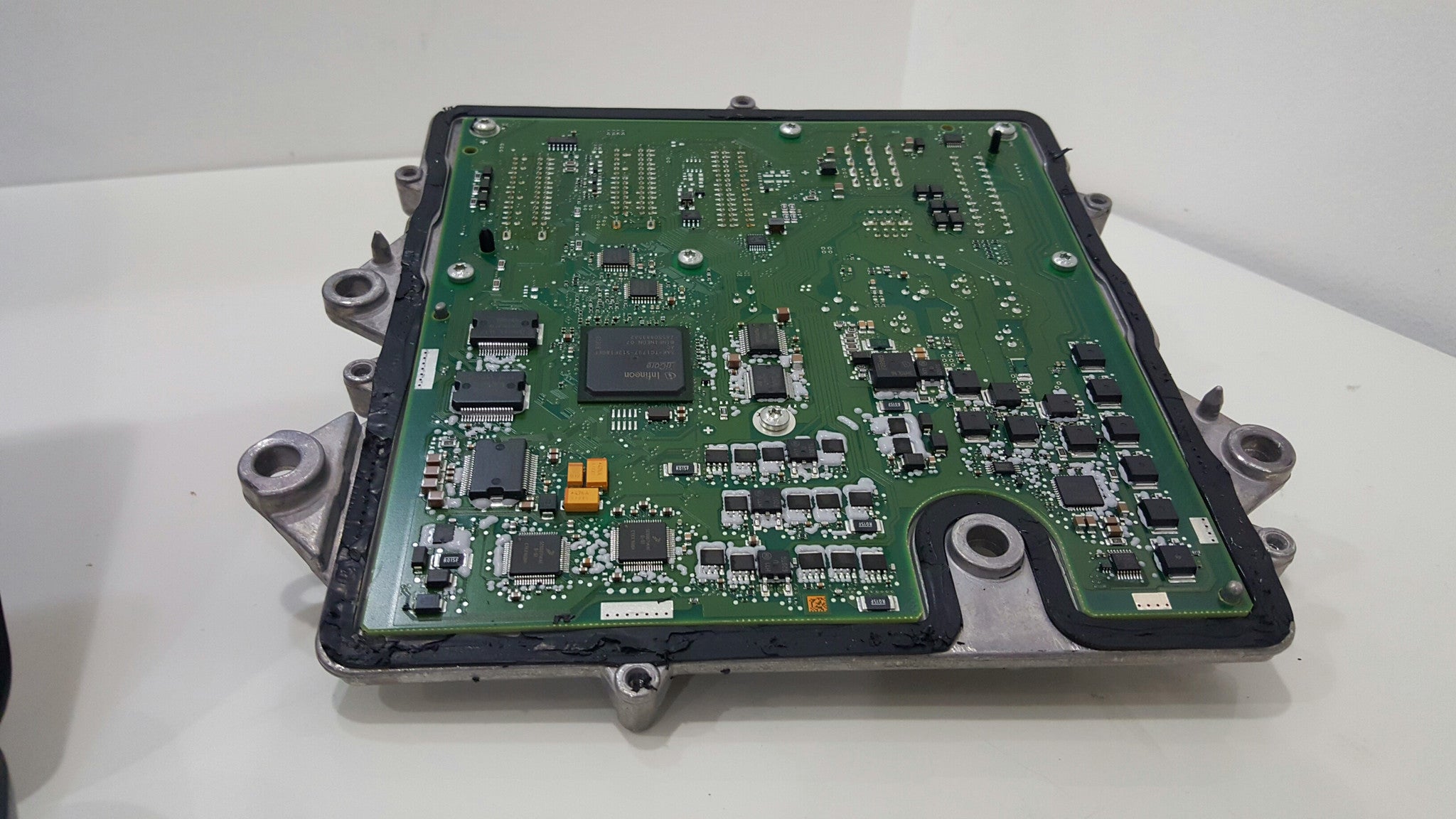


***WE ONLY TUNE WITH OUR SUPPLIED INJECTORS AND MAF. THERE IS NO EXCEPTIONS TO THIS***
TURBO OBD1 S5x M5x TUNE
This is our tried and tested tune for turbo OBD1 S5x M5x engines. These tunes were designed on a Dynojet dyno and tested in the real world! OBD1 engines receive a base map on a chip along with free revisions. 60LB injectors are good for 300-600WHP, and 115LB injectors on E85 are good for 350-900WHP.
INCLUDES:
⦁ Blow through MAF
⦁ 60lb, 115lb high impedance injectors
⦁ Wiring harness adapter
⦁ Aluminium weld-on flange for a 3" pipe In the modification box, please specify all current vehicle modifications and desired options.
🚘 Horsepower Gains
1. Power Potential (M52 / S52 w/ M3 Cams)
-
Stock compression: ~400 WHP
-
Low compression (cut ring + spacer): ~500 WHP
-
E85 (any compression): 600+ WHP
-
Note: 328 cams remove ~40 WHP compared to M3 cams.
2. Turbo Options & Output
Precision
-
6266 (DBB best, journal works): Baseline turbo.
-
Next Gen version: +50 WHP (~700–850 WHP capable).
-
-
6466: Adds ~50 WHP compared to 6266.
Garrett
-
G35-900: Comparable to 6262. Similar to 6266, but 6266 has a better power curve.
-
GTX3582R: Makes similar numbers, but weaker power curve.
BorgWarner
-
SXE362: Matches 6266 in peak power, but spools later and loses boost on shifts.
Smaller Options
-
6062 (~600 WHP turbo):
-
Makes less power per pound of boost.
-
Limited on pump fuel (expect ~50 WHP less vs. 6266).
-
3. Engine: Stock vs. Built
-
A built engine adds zero HP by itself.
-
Benefit = durability when mistakes happen (lean condition, overboost, etc.).
-
Real-world examples:
-
Many stock engines survive 600+ WHP for years.
-
Others fail at 350 WHP due to install errors (vacuum lines wrong, bad fuel pump install, etc.).
-
4. Manifolds
-
Top Mount:
-
Best: Otis / Good & Tight (E36, proven 900+ WHP, ~$600).
-
Other solid options: Jon Vigil Viengineered, 88 Lab.
-
CX Racing: manifold cracks; charge pipe must be fully redone.
-
American-made options: good fabrication quality, but expect long lead times. Do not follow their “tuning suggestions.”
-
-
Bottom Mount:
-
SPA T4: caps out ~700 WHP (can push ~900, but backpressure extreme).
-
Corey Misko: strong bottom-mount option.
-
5. Exhaust & Turbine Housing
-
Use large housings (1.0+ A/R) for these engines.
-
3.5” exhaust helps reduce backpressure and raise safe WHP.
6. Intercoolers
-
TR1035:
-
Fits with A/C.
-
Excellent cooling for most builds.
-
-
TR1045: Better option if it fits.
-
Rule: Keep IAT low, especially on pump gas.
-
High IAT + high backpressure = knock limit.
-
-
With big housing + 3.5” exhaust, some unopened S52/M52s can push ~500 WHP on pump gas.
7. Fuel & Octane Guidelines
-
All WHP numbers are on 93 E10.
-
Subtract ~50 WHP for:
-
91 E10
-
94 E10 (Canada)
-
-
E85:
-
Higher octane + cooling effect.
-
Some think it’s a “bandaid,” but it’s actually a huge help in keeping engines alive.
-
Works at 35+ PSI on any compression.
-
8. Fuel System
-
Over 255 lph pump → aftermarket FPR required:
-
AER13129 fuel pressure regulator
-
TS-0402-1110 –6 ORB to 8mm barb fittings (to OEM line)
-
TS-0402-2023 gauge
-
8mm E85-safe fuel line (PN: 27340 / 42196039)
-
-
Radium PTFE in-tank lines only.
-
Do not use pump-supplied or OEM lines.
-
Radium PTFE will outlast the car.
-
9. Spark Plugs
-
NGK 4091 (up to 700 WHP):
-
.024 gap → 350–450 WHP
-
.022 gap → 450–550 WHP
-
.018 gap → 550–700 WHP
-
-
NGK 4554 (750+ WHP):
-
.018 gap → 750–800 WHP
-
.016 gap → 850+ WHP
-
10. Boost & Tuning Practices
-
Always boost leak + smoke test.
-
Even professionals find leaks.
-
Charge pipe popping off is not the most common failure—small leaks matter more.
-
PMAS/VMP MAF housings: they always leak slightly through the connector.
-
Fix: apply silicone to the modification plate (email for images).
-
-
-
Run no boost controller first, then add it in (fewer variables).
-
Manual controller: use yours (others are bleed style = slower spool).
-
Electric controllers: most are fine. AEM = hard to read.
-
CX Racing turbo kits → guaranteed boost creep, risk of motor damage.
-
Start with 5 PSI spring.
-
If high-RPM boost exceeds 10 PSI (stock compression) or 15 PSI (low compression), fix manifold/wastegate flange.
-
11. Intake & MAF Setup
-
MAF must be in straight 3” aluminum pipe (not aftermarket housings).
-
Reducers (3" → 2.75"), even 10” away, = turbulence → drivability issues.
-
BOV must be fully closed at idle/light throttle.
-
If it stays cracked open, use stiffer spring.
-
Even small leaks 10” away from MAF cause surging.
-
12. Hoses, Couplers & Lines
-
Reinforced silicone couplers only for charge pipes.
-
Pressure hoses: snug, with clamps + zip ties.
-
Vacuum hoses: silicone, very tight fit (Vibrant packs recommended).
-
Wastegate lines: reinforced silicone or AN.
-
Valve cover vent: vent to atmosphere.
13. E36-Specific Notes
-
ICV fitting: clean + epoxy in place OR buy aftermarket.
-
ICV hoses: must be silicone (OEM fall apart/leak).
-
Do not use ICV hose kits going to a CCV separator → will pressurize crankcase.
-
O2 sensor: plug closest to firewall.
-
M50 manifold on OBD2: requires OBD2 IAT (thread to M12x1.5 or buy adapter).
-
Up pipe: idle may sound like a small misfire.
-
SAP valve: no need to plug in fuel rail harness connection.
14. Fuel Octane & Boost Limits
-
Stock compression / 91 octane: 7–9 PSI
-
Low compression / 91 octane: 13–17 PSI
-
Stock compression / 93 octane: 7–12 PSI
-
Low compression / 93 octane: 13–20 PSI
-
Any compression / E85: 35+ PSI
15. Support Guidelines
-
For support, always include:
-
Screenshot of codes (using supplied software).
-
Datalog (single gear pull, 100% throttle).
-
Photos: vacuum routing, ICV hoses, FPR line routing, MAF + charge pipe routing.
-
-
Do not send logs with multiple gear pulls unless specifically requested.
-
All logs must be full throttle.
-
If traction issues: log in a higher gear.
-
Choose options



